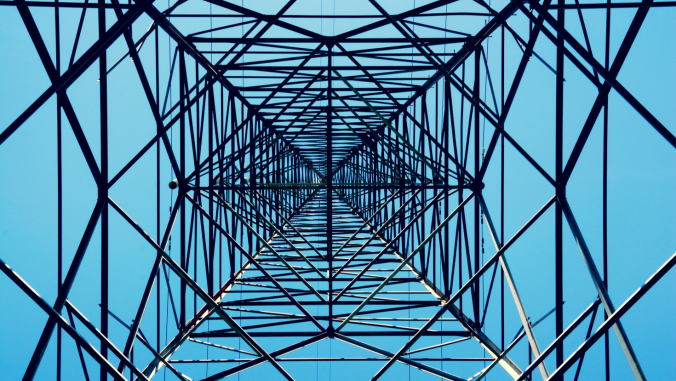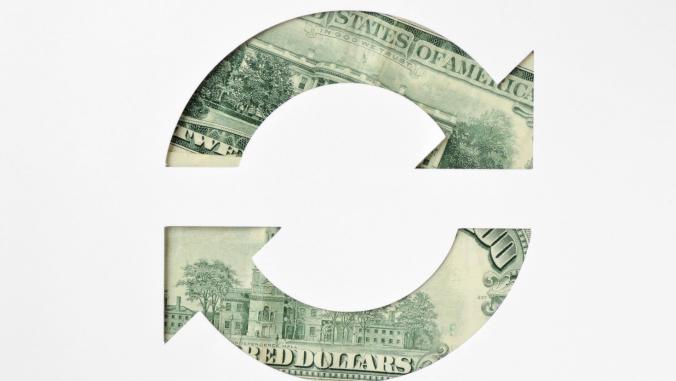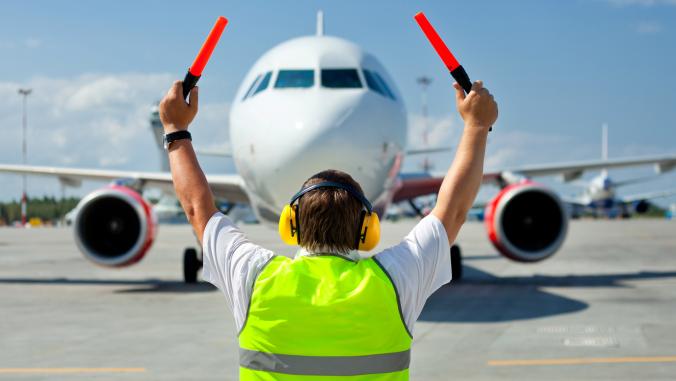Airlines will consume a quarter of the world's carbon budget by 2050
Manufacturers are engaged in a fast-paced fight to deliver efficiency gains that outstrip projected industry growth, says UTC.

Less than 18 percent of the world's population has stepped foot on an airplane. Air travel is still, to all intents and purposes, an activity only the privileged few have the luxury to enjoy.
But that's all about to change, warned John Mandyck, chief sustainability officer at United Technologies Corporation (UTC), the multinational manufacturing giant responsible for a large chunk of the global market for aviation equipment, including its flagship Pratt & Whitney jet engines.
"So many of us in the U.K. or in the U.S. take air travel for granted, but the fact of the matter is only a very small minority of the population is traveling by air today," he said. "That's all about to change. The forecast is that in the next 20 years air travel will double. Passenger numbers will double, and the number of commercial aircraft in the skies will double."
There's no doubt the aviation industry is facing a massive challenge. This surge in growth expected over the next 20 years could push up carbon emissions to the point where one industry consumes a quarter of the world's carbon budget by 2050. Yet as almost every other sector faces increasing regulatory and social pressure to decarbonize, the likelihood of aviation winning special exemptions from policymakers and the public grows slimmer.
As such the industry, working together under the International Civil Aviation Organisation (ICAO), already has promised to establish a scheme to deliver carbon-neutral growth after 2020. But the truth is that no one quite knows how the sector can meet growing demand while decarbonizing. No single technology or market, from biofuels to electric planes, is yet capable of promising guilt-free flight.
Instead, CORSIA, as the ICAO scheme has been dubbed, focuses on establishing a carbon-offsetting scheme to neutralize emissions above 2020 levels. Although offset schemes are fraught with their own problems — chief among them concerns that without expert handling they can be vulnerable to double-counting or other mechanisms for exaggerating their effectiveness — they at least provide a clear incentive for airlines to avoid offset costs by curbing emissions as much as possible at the source.
The forecast is that in the next 20 years air travel will double. Passenger numbers will double, and the number of commercial aircraft in the skies will double.
All of which means the focus on efficiency is even more pronounced than usual in aviation circles at the moment. High fuel costs and the looming implementation of CORSIA means airlines are on the hunt for measures to slash fuel consumption that can kick in early in the next decade.
That is good timing for UTC, which last year launched its Geared Turbofan jet engine. Twenty years and $11 billion in the making, UTC claims the Geared Turbofan is the "world's most fuel efficient jet engine," cutting 16 percent off an aircraft's average fuel burn. That's a "generational gain" in aircraft efficiency, said Mandyck: "If you can get 2 to 3 percent gain out of a jet engine is pretty good; to get 16 percent is huge."
It also saves $1 million a year in fuel costs per airplane, which may explain why UTC has 8,000 engines on order already. With a production rate of around 400 a year, most of the new engines will hit the skies in the 2020s, when CORSIA is scheduled to be up and running, helping many airlines curb the impact of the new offset costs they will face.
"These technologies are commercializing exactly at the right time and in the right place to support the public policy goals and environmental goals," Mandyck said.
UTC — which makes vast quantities of other aviation equipment as well as engines — is also looking for efficiencies beyond the jet engine. Mandyck claimed electrifying other components on the plane, from landing gear to cockpit control systems, can make a big difference to an aircraft's weight, and therefore its fuel burn and emissions output. "In the past, an actuator, the device that for example moves the wing flaps, would have been hydraulically controlled," Mandyck explained. "That means you need a lot of oil, hoses and piping. We can reduce and eliminate all of that by making those electrically controlled."
Energy efficiency takes flight
But while improving the efficiency of aircraft is no doubt positive news for both airline operators and the planet, isn't there only so far this efficiency can go? Surely, if faced with the type of growth projections the aviation sector is confronting, it should be working on something more than incremental change?
"I would argue that a 16 percent improvement in fuel efficiency is not incremental," Mandyck shot back. "That is revolutionary if you look back at the history of aviation."
But, he conceded, it won't solve aviation's environmental problems on its own. "Clearly, more has to be done, and it is," Mandyck said.
He said engineers at UTC are working on electric generation for planes, although he is skeptical that this will become a viable option in the near future. "We don't see technologies today that have the lift and the power that today's jet engine has, and depending on your fuel mix, if you don't have 100 percent renewable energy, the powering for the electric airplanes may not be competitive with the fuel efficiency of a jet engine," he argued.
The famous Solar Impulse plane may have circumnavigated the globe using only solar power, but currently, hopes of delivering zero carbon flight at commercial scale face some pretty daunting technical challenges.
While many airlines are experimenting with biofuels, scaling the market and ensuring jet biofuels are produced sustainably is a major challenge.
"You have to weigh those considerations," Mandyck continued. "And when you are talking about batteries, you are talking about adding weight to the airplane, too. So that's the balance that has to be equated. It doesn't mean that in 20, 30, 50 years that airplanes are going to look much different — I expect they will, but for the near future what we see is gas turbine technology. We are trying to find ways to optimize that and we think we have with this new revolutionary design."
What really could hold the key is biofuels, which Mandyck said hold "a lot of promise" if combined with gas turbine engines. But while many airlines are experimenting with biofuels, scaling the market and ensuring jet biofuels are produced sustainably is a major challenge. Waste-based biofuels might prove something of an answer, although one pioneer in the sector, James Hygate, admitted recently that supply is too limited for them to become a wholesale solution for the sector.
This leaves the airline industry with some tough choices. It might make good business sense for the aviation sector to be boosting efficiency and cutting fuel consumption, but ultimately that can only take it so far.
For Mandyck, at some point, the positives of air travel outweigh its environmental impacts. "I think we have to sit back and recognize what the global benefits are of aviation," he argued. "What purpose does it serve in connecting our economies, connection our cities, and recognizing that it is an integral part of our economy and finding ways to make sure that it can advance sustainably?"
The trouble is, with more than 80 percent of the world's population moving ever closer to the boarding gate, cutting emissions to keep pace with the growth in demand well may turn out to be a race the industry just can't win. The question is, what happens then?
This story first appeared on:





